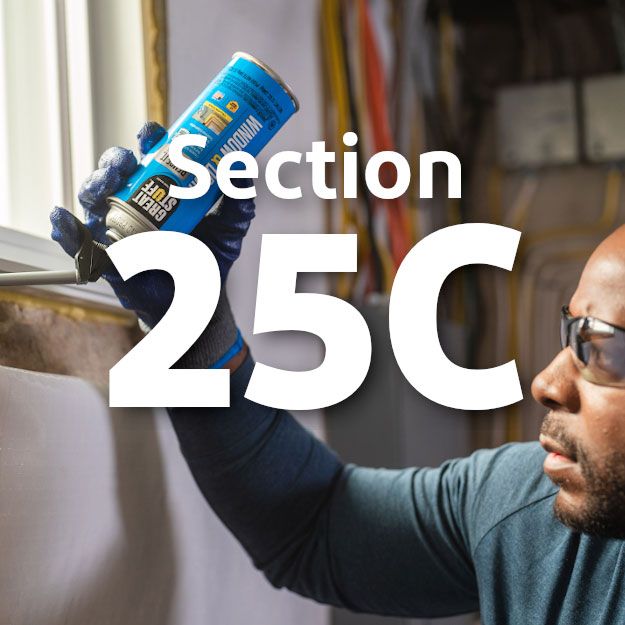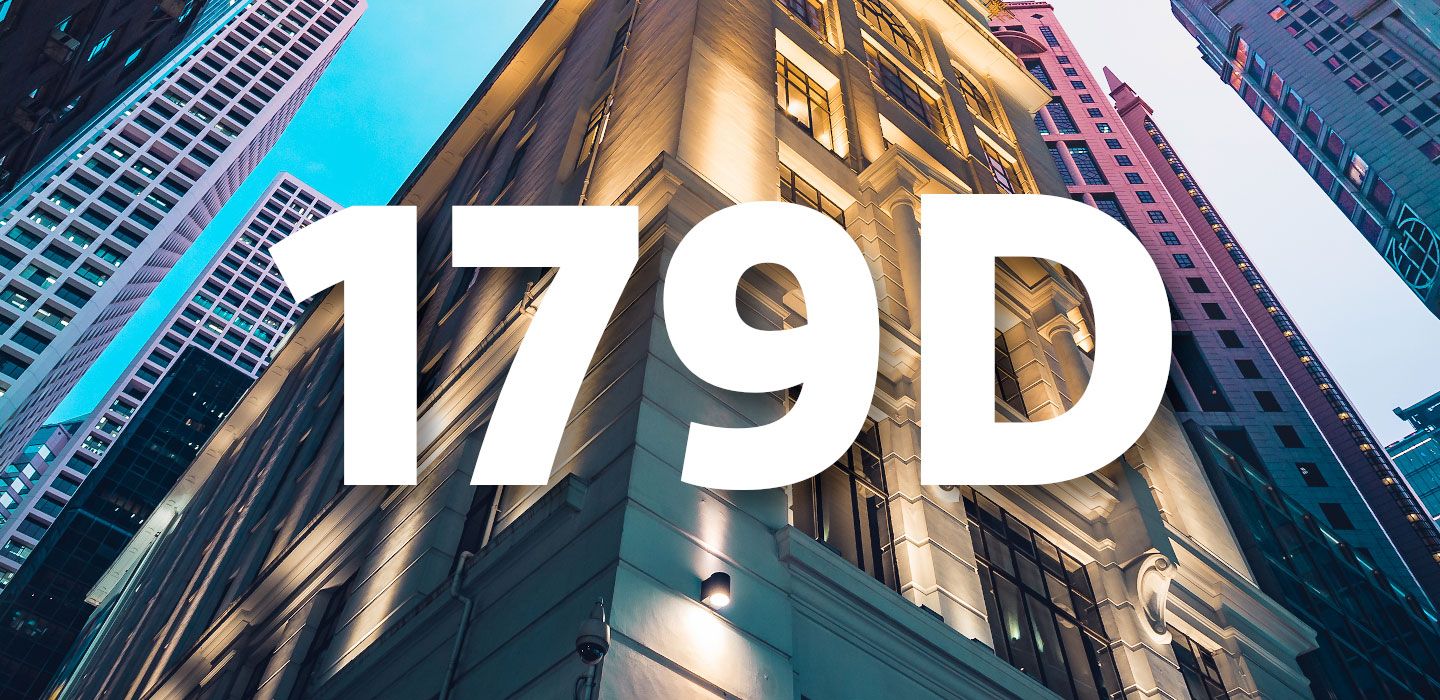Did you know there is
still time to earn tax
incentives on your projects?
The Inflation Reduction Act (IRA) of 2022* has many provisions aimed to make sustainable improvements more accessible and affordable for homeowners, homebuilders, and designers.
The IRA increased and extended several tax incentives for a variety of building and construction projects to encourage the adoption of energy efficient upgrades in new and existing buildings.
With the passing of H.R.1 One Big Beautiful Bill Act on July 4, 2025, there is still time to take advantage of the benefits of tax incentives when investing in energy-efficient upgrades. These improvements encompass various aspects such as weatherization and efficiency upgrades, the installation of new electric appliances, and purchasing electric vehicles or rooftop solar systems.
Learn more about how we can help you achieve the tax incentives below!
How can DuPont help?
DuPont air-sealing, thermal, and weatherization products work together to make your job easier, and helps improve performance. With 70 years of industry-leading building science and expertise, we provide toughness and solutions you can trust.
Our full line — including DuPont™ Tyvek® Weatherization Systems, DuPont™ Styrofoam™ Brand XPS Insulation, Froth-Pak™ Spray Foam, and Great Stuff™ and Great Stuff Pro™ Insulating Foam Sealants - in combination with our building science and Building Knowledge Center can help meet the energy efficiency and envelope requirements of the tax credits and tax deductions below.

Homeowners & Tenants Residential Retrofit:
- Energy Efficient Home Improvement Credit
- Valid properties placed in service on or before Dec. 31, 2025
- Available to a homeowner or tenant for upgrades to their primary residence
- Use our Manufacturer's Certification Statement as documentation for your records
DuPont is committed to delivering the highest level of service, providing quality products, and supporting investment in solutions that help decarbonize the built environment.
Tax Deduction for Energy Efficient Commercial Building (Section 179D):
Available to builders, contractors, and designers of commercial construction projects that begin construction on or before June 30, 2026.
All official information related to the tax credit will be determined and published by the IRS. Use Form 7205 to file this credit. All revisions are available at www.irs.gov/form7205.
To claim the 179D Deduction, the IRS requires that you (through an engineering professional) use a qualified software program to model your energy usage. See a list of qualified software for calculating energy savings.
A project designed, approved, and constructed in accordance with the 2009 and all subsequent editions of the International Energy Conservation Code (IECC), where adopted, should meet the intent of IRA where compliance with ASHRAE 90.1-2007 is required.
|
Date Placed In Service |
Applicable Reference Standard 90.1 |
|---|---|
|
Before 1/1/2015 |
Reference Standard 90.1-2001 |
|
After 12/31/2014 and before 6/30/2026* |
Reference Standard 90.1-2007 |
|
|
|
* Taxpayers who begin construction before 1/1/2023 may apply Reference Standard
90.1-2007 regardless of when the building is placed in service. Minimum standards
that must be met to achieve 179D. Local code requirements supersede those standards.
The table below shows levels of Section 179D tax deduction eligibility based on energy savings percent and standards achieved, for owners of new and existing buildings.
|
Energy Savings (%) |
Energy Cost Reduction Standard |
Tax Year Starting |
Tax Deduction ($/sqft) |
Additional Requirements |
|---|---|---|---|---|
|
50% or more, modeled savings |
ASHRAE 90.1-2007 |
2022 |
$1.88 (up to $5.00 in 2023 for fully qualifying property) |
Meeting Prevailing Wage and Apprenticeship requirements |
|
25% or more, modeled savings |
ASHRAE 90.1-2007 |
2023 |
Starting at $2.50 (increases $0.10/sqft for every percentage of energy savings up to $5.00) |
Meeting Prevailing Wage and Apprenticeship requirements |
|
10% |
ASHRAE 90.1-2007 |
2022 |
$0.63 (for envelope component of partially qualifying property) |
N/A |
*Savings percentages based on IRS Notice 2012-26. The information in this program was prepared only as a predictor of expected cost and not as a guarantee of purchase price.
The following thermal, air and weather-resistive barrier products and systems, when installed in a properly designed commercial building, and in accordance with DuPont’s most recently published Commercial Installation Guidelines, will support eligibility for 179D Tax Deduction for Energy Efficient Commercial Buildings (EECB).
- DuPont™ ArmorWall™ Systems
- DuPont™ Thermax™ Wall System (TWS)
- DuPont™ Ultra Wall System
- DuPont™ Tyvek® CommercialWrap® & Tyvek® CommercialWrap® D systems
- DuPont Flashing Products, including DuPont™ StraightFlash™, DuPont™ Flashing Tape, FlexWrap™, FlexWrap™ EZ, and VersaFlange™
- DuPont™ Tyvek® Fluid Applied WB+™ system
- DuPont™ Styrofoam™ Brand XPS products
- DuPont™ Thermax™ Brand Polyiso products
- Froth-Pak™ Foam Sealant and Insulation products
- Great Stuff™ & Great Stuff Pro™ Brand foam sealants
Energy Efficient Home Credit (Section 45L):
Available to eligible contractors of new residential construction projects.
The Energy Efficient Home Credit (Section 45L) provides Federal tax credits for single family homes, manufactured homes, and large multifamily residential buildings that were/are acquired (sold or leased) between Jan. 1, 2023 and June 30, 2026.
The tax credit per dwelling has increased:
- Up to $2,500 (meet or exceed ENERGY STAR® requirements)
- Up to $5,000 (meet or exceed Department of Energy (DOE) zero-energy ready
Additionally, Multifamily projects are no longer restricted to 3 stories or less, and Low Income Housing Tax Credit (LIHTC) can be used in addition to 45L where applicable.
Use Form 8908 to file this credit. All revisions are available at www.irs.gov/form8908. Be sure to refer to ENERGY STAR® and DOE Zero-Energy Ready Home program requirements to understand which guidelines apply and their full details.
45L DuPont Qualifying Products
Products that support eligibility for ENERGY STAR® and DOE:
- DuPont™ Tyvek® Water-Resistive and Air Barrier products and systems
- DuPont Flashing Products, including DuPont™ StraightFlash™, DuPont™ Flashing Tape, FlexWrap™, FlexWrap™ EZ, and VersaFlange™
- DuPont™ Styrofoam™ Brand XPS Insulation products
- DuPont™ Weathermate™ Housewrap products and systems
- DuPont™ ArmorWall™ Systems
- DuPont™ Thermax™ Brand Polyiso products and systems
- DuPont™ Tuff-R™ Polyiso Insulation
- Froth-Pak™ Foam Sealant and Insulation products
- Great Stuff ™ and Great Stuff Pro™ Foam Sealant products
Energy Efficient Home Improvement Credit (Section 25C):
Available to a homeowner or tenant for upgrades to their primary residence placed in service on or before Dec. 31, 2025.
This credit can now be used annually, covering 30% of eligible expenses up to $1,200 per year.
Use our Manufacturer’s Certification Statement as documentation for your records. All official information related to the tax credit will be determined and published by the IRS. Use Form 5695 to file this credit. All revisions are available at www.irs.gov/form5695.
For more information, visit Home Energy Tax Credits | Internal Revenue Service (irs.gov)
25C Qualifying Products
- DuPont™ Tyvek® Water-Resistive and
Air Barrier products and systems - DuPont Flashing Products, including DuPont™ StraightFlash™, DuPont™ Flashing Tape, FlexWrap™, FlexWrap™ EZ, and VersaFlange™
- DuPont™ Styrofoam™ Brand XPS Insulation products
- DuPont™ Tuff-R™ Polyiso Insulation products
- DuPont™ Thermax™ Brand Polyiso Insulation products
- DuPont™ Weathermate™ Housewrap products and systems
- Froth-Pak™ Foam Sealant and Insulation products
- Great Stuff™ and Great Stuff Pro™ Foam Sealant products
*The Inflation Reduction Act (IRA) of 2022 was signed into law August 16, 2022. The One Big Beautiful Bill Act was signed into law July 4, 2025, revised the sunset dates for these incentives.
ENERGY STAR and the ENERGY STAR mark are registered trademarks owned by the U.S. Environmental Protection Agency.
This information is prepared for informational purposes only and is based upon our understanding at the time of preparation of this document of rules and regulations governing the Energy Efficient Home Credit (Section 45L), Tax Deduction for Energy Efficient Commercial Buildings (Section 179D), and Energy Efficient Home Improvement Credit (Section 25C), under the tax code. It is subject to change. This information is not intended to provide legal, tax or accounting advice regarding the Customer’s ability to claim such a tax incentive. Customer is solely responsible and should consult with their tax, legal or accounting advisor in determining their eligibility (including amount of potential tax benefit) under the current tax code and other applicable regulations for claiming such a tax incentive. DUPONT MAKES NO WARRANTIES, EXPRESS OR IMPLIED, AND ASSUMES NO LIABILITY IN CONNECTION WITH THE ACCURACY OR USE OF THIS INFORMATION. This information is not intended for use by others for advertising, promotion, or other publication for commercial purposes. Revised July 2025.





